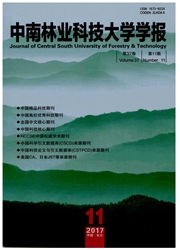

 中文摘要:
中文摘要:
系统地阐述了相似度理论,将该理论体系与层次分析法(AHP)相结合,以深圳特区两期绿地斑块的动态变化为例,对每个区总体和每种类型绿地总体的斑块相似度进行估计;通过与一定阈值的比较,判断其相应绿地斑块的变化程度及变化类型,最后综合分析整个深圳特区两期绿地斑块动态变化的原因。结果表明:利用相似度分析绿地斑块的动态变化是可行的,为进一步评估深圳特区城市化进程中的绿地规划提供了有效的方法和依据。
 英文摘要:
英文摘要:
The similarity theory was systematically introduced,by combining the theory and the analytic hierarchy process(AHP),and taking the dynamic changes of two-stages green land patches in Shenzhen as an example,the patches similarity of each distract and each green land type were estimated.The location,shape and areas of green land unit were used as the similarity elements.Then the similarity coefficients can be defined.The overlapping number of green land patches indicated the location variation of green land.The ratio of minimum and maximum shape index of green land indicated the shape variation of green land.With the same method,the areas variation coefficient was also obtained.The results shows that the estimation of green land variation based on similarity theory and method are feasible.The research of results also provide an effective method for the further assessment of green land development in Shenzhen Special Economic Zone.
 同期刊论文项目
同期刊论文项目
 同项目期刊论文
同项目期刊论文
 期刊信息
期刊信息
